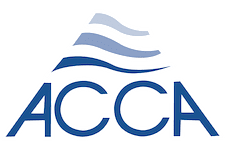AC short cycling refers to the frequent on-off cycling of an air conditioning system within a short period. This phenomenon affects the performance and efficiency of the AC unit. It can lead to potential damage and increased energy consumption. To optimize cooling effectiveness and address these concerns, it is vital to implement preventive measures that effectively prevent AC short cycling. This article will discuss practical strategies and tips for AC short cycling prevention.
Proper Sizing and Installation:
Proper sizing and installing the AC unit are crucial to prevent short cycling. An oversized AC system cools the room quickly, causing the thermostat to reach the desired temperature faster and turning off the system prematurely.
This frequent cycling can strain the components and lead to damage. On the other hand, an undersized AC unit may need help to cool the space adequately, leading to constant operation and inefficient performance.
It’s best to consult with a professional HVAC technician to ensure the right size for your AC unit. They can calculate load to determine the appropriate cooling capacity for your specific space.
Proper installation, including ductwork and insulation, is essential to facilitate efficient operation and prevent short cycling.
Regular Maintenance:
Regular maintenance is crucial for preventing AC short cycling and ensuring the longevity of your system. It is recommended to schedule annual maintenance visits with a qualified HVAC technician. During these visits, the technician will inspect and clean the various components, check refrigerant levels, lubricate moving parts, and identify potential issues that could lead to short cycling.
Regular maintenance also involves cleaning or replacing air filters. Clogged or dirty air filters restrict the airflow, causing the AC system to work harder to cool the space. This increased strain can result in short cycling.
It’s advisable to clean or replace air filters every one to three months, depending on usage, to promote proper airflow, improve energy efficiency, and prevent short cycling.
Optimal Thermostat Settings:
Setting the thermostat at appropriate and consistent temperatures prevents AC short cycling. Avoid setting the thermostat too low or too high, as extreme temperature differences between the indoor and outdoor environments can trigger frequent on-off cycles.
Instead, choose a moderate temperature that provides comfort without overworking the AC unit. Gradual adjustments to the thermostat are recommended to maintain a stable indoor climate.
Programmable thermostats are also beneficial as they allow you to set temperature schedules that align with your daily routine, minimizing unnecessary cycling and optimizing energy efficiency.
Ensure Proper Airflow:
Proper airflow is essential for efficient AC operation and to prevent short cycling. Obstructions to the airflow can lead to insufficient cooling and force the AC system to cycle more frequently. To ensure proper airflow:
- Keep vents and registers unobstructed: Furniture, curtains, or other objects should not block the vents or registers. Ensure they are clear to allow air to flow freely throughout the space.
- Clean the outdoor unit: The outdoor unit should be free from obstructions such as leaves, debris, or vegetation. Regularly check and clean the unit to maintain optimal airflow and prevent short cycling.
- Ductwork inspection: Have a professional technician inspect the ductwork for leaks, blockages, or insulation issues. Leaky or poorly insulated ducts can lead to inadequate airflow and contribute to short cycling.
Insulation and Sealing:
Proper insulation and sealing of your home play a significant role in preventing AC short cycling. Effective insulation helps minimize heat transfer, reducing the workload on the AC system.
Here are some insulation and sealing tips:
- Attic insulation: Ensure the attic is adequately insulated to prevent heat from penetrating the living space. Insulation should be installed according to local building codes and recommended R-values.
- Wall insulation: Consider insulating walls, especially in older homes with minimal insulation. Proper wall insulation reduces heat gain and loss, improving the efficiency of your AC system.
- Sealing gaps and cracks: Seal any gaps, cracks, or leaks in windows, doors, and ductwork to prevent the infiltration of warm air and the loss of cooled air. Weatherstripping, caulking, and sealing materials can help seal air leaks effectively.
- Insulated windows: Consider installing energy-efficient windows that provide better insulation against heat transfer.
Proper insulation and sealing practices can create a more energy-efficient and comfortable indoor environment while minimizing short-cycling AC risks.
Address Refrigerant Leaks:
Refrigerant leaks can cause inadequate cooling and lead to short cycling as the AC system tries to compensate for the loss of refrigerant. If you suspect a refrigerant leak, it’s essential to have it promptly addressed by a professional HVAC technician.
They can locate and repair the leak, recharge the system with the appropriate refrigerant, and ensure the AC unit operates optimally.
Consider Zoning Systems:
Zoning systems provide the flexibility to cool specific areas or zones of your home independently. By dividing your home into zones with separate thermostats and dampers, you can avoid overcooling or undercooling certain areas, reducing the likelihood of short cycling. Zoning systems allow for more precise temperature control and can improve energy efficiency.
In conclusion, AC short cycling can harm your air conditioning system’s performance, efficiency, and lifespan. By implementing these preventive measures, you can ensure efficient and reliable cooling while minimizing the risk of short cycling.
Proper sizing and installation, regular maintenance, optimal thermostat settings, attention to airflow and insulation, addressing refrigerant leaks, and considering zoning systems are all crucial steps in preventing AC short cycling and maintaining a comfortable indoor environment.
Remember to consult with a professional HVAC technician for expert advice and assistance in implementing these preventive measures for your specific AC system.
















